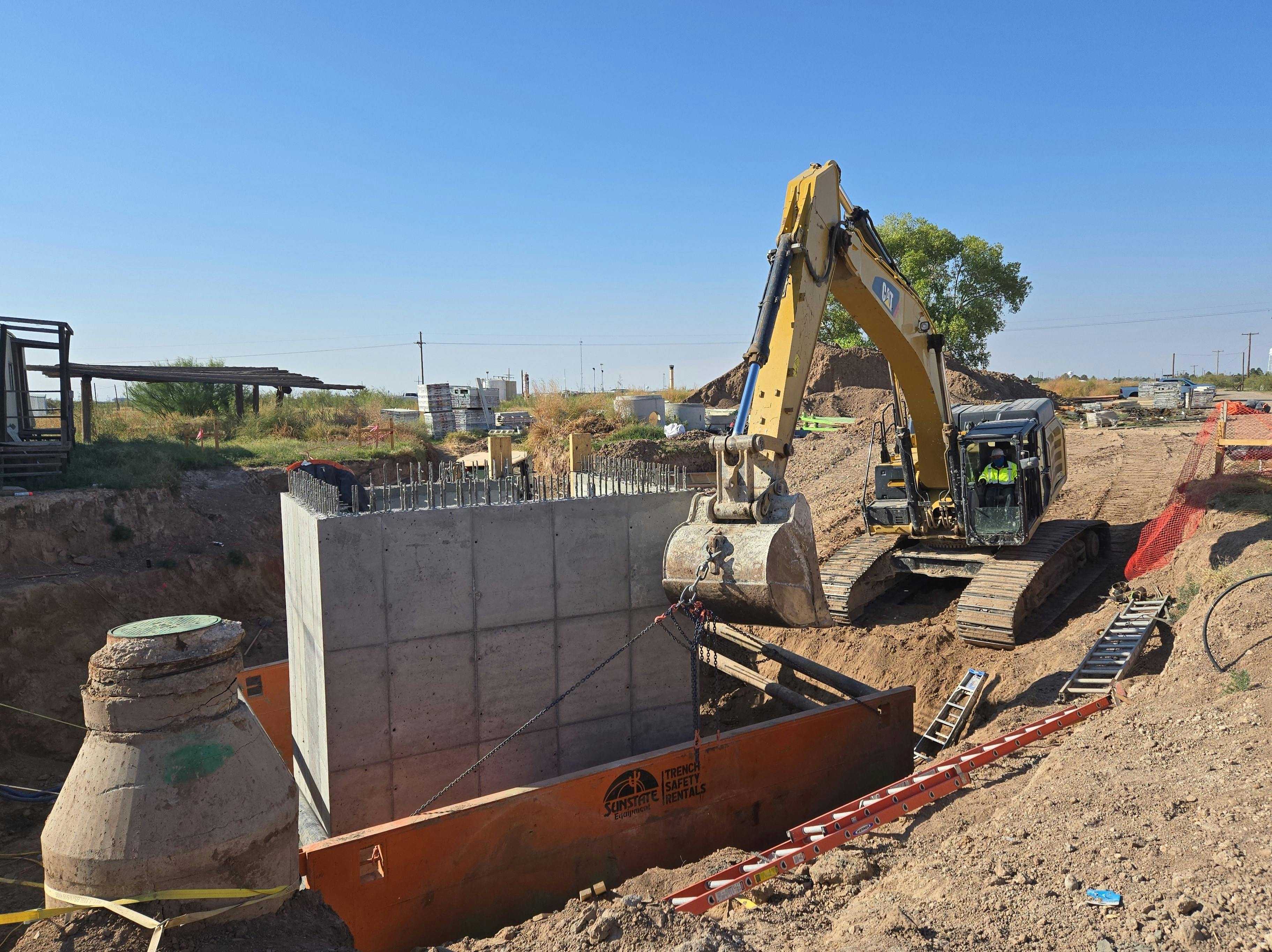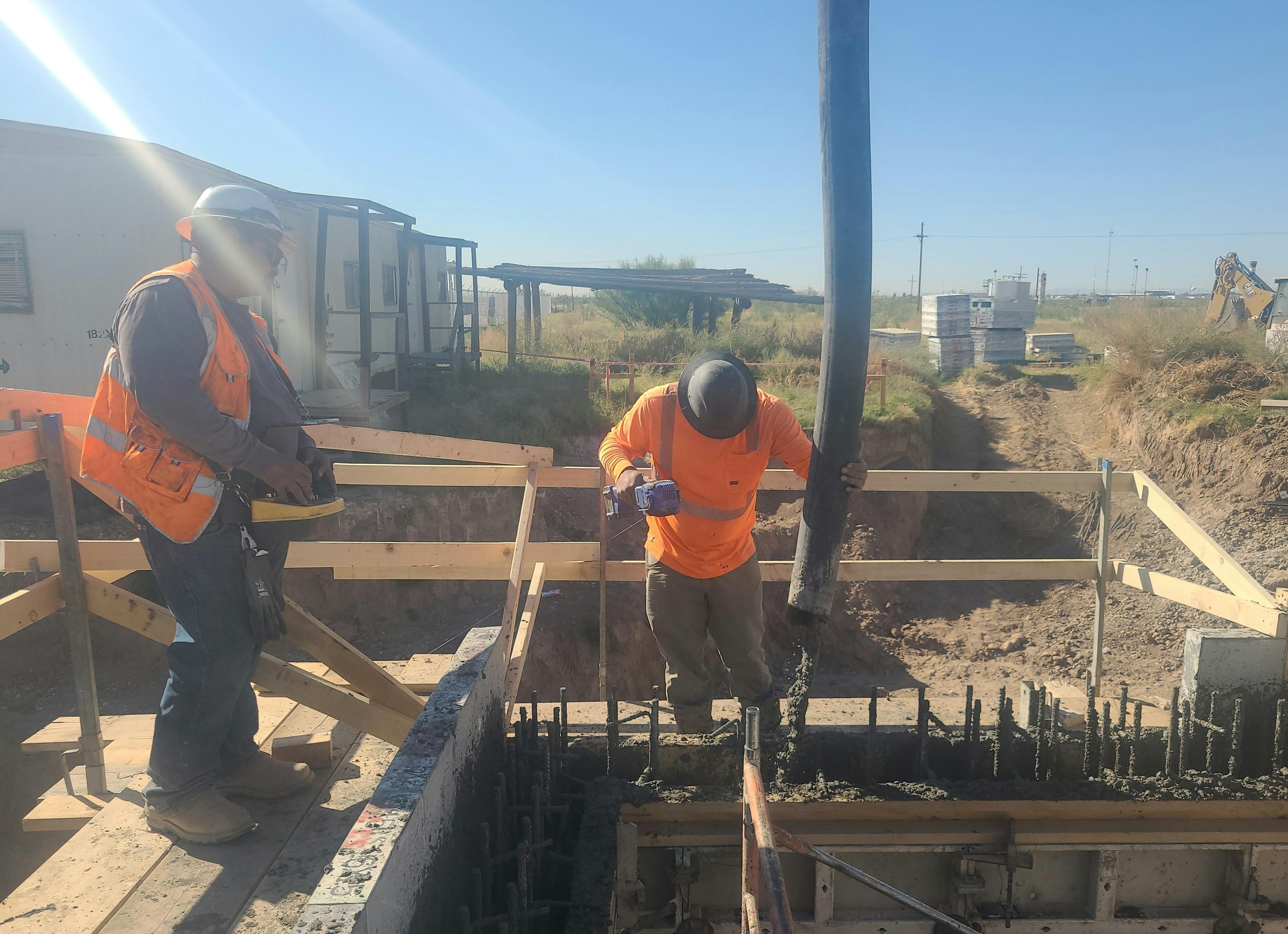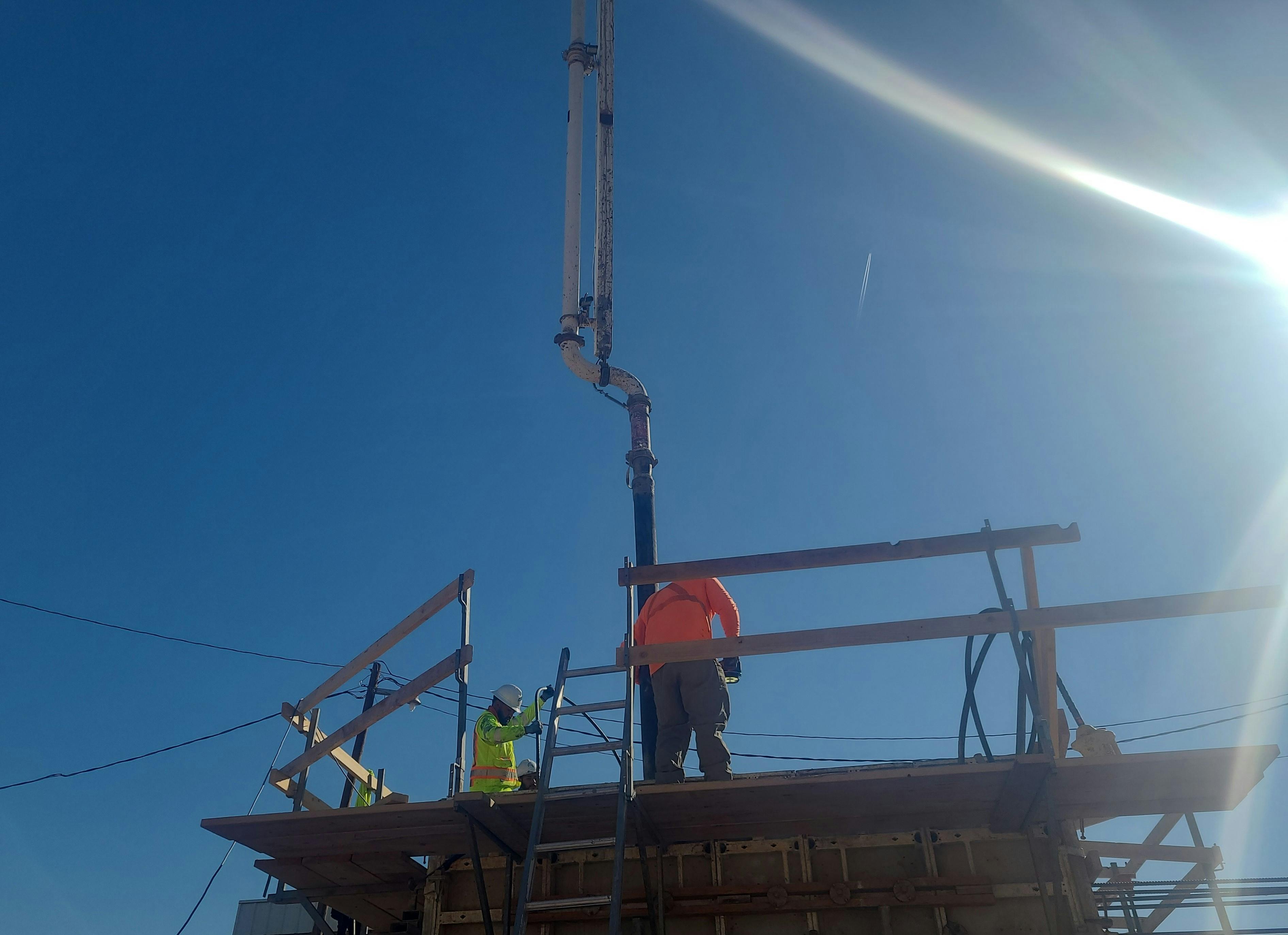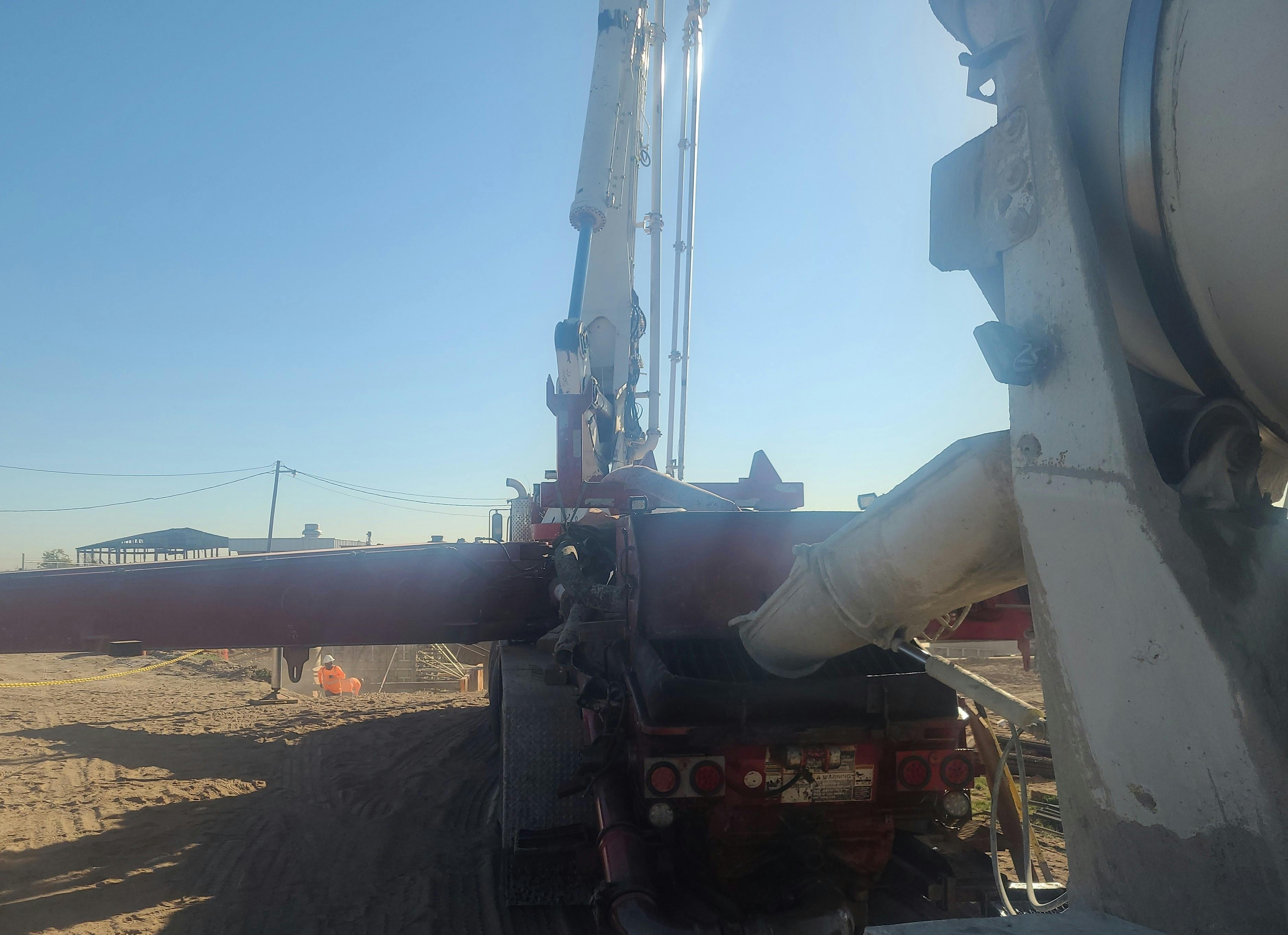Precision Under Pressure: The Smart Solution to Concrete Placement Challenges
Written By: Richard Landsheft, RPR
Date: December 5, 2024

Concrete placement in construction is a dance of precision and practicality, but what happens when the stage—a concrete truck—can’t reach the performance area? For contractors, this challenge can mean turning to innovative solutions or leaning on time-tested techniques. Here’s how the team at the Pecos Wastewater Treatment Plant (WWTP) tackled this common issue during a recent project.
The Challenge: Formwork Beyond Reach
On the Pecos WWTP project, the emergency overflow wall sections required precise concrete placement. However, the site layout made it impossible for the concrete truck to get close enough to pour directly into the forms. Several options were considered, each with its pros and cons:
- Wheelbarrows: Labor-intensive and inefficient for large pours.
- Concrete Buckets with Cranes: Reliable but time-consuming and limited in reach.
- Excavators: Helpful in some situations but unsuitable for the precision needed here.
- Concrete Pumps: The most effective, though slightly costlier option.
The contractor chose to use a 53-meter boom concrete pump, a decision that balanced cost with efficiency and quality.
Why a Concrete Pump?
Concrete pumps revolutionize the placement process, especially in complex scenarios like this one. By using a boom pump, the contractor achieved the following:
- Accuracy: The pump’s remote-controlled articulating arm allowed precise placement.
- Efficiency: High pumping volumes reduced labor requirements.
- Reach: The pump effortlessly spanned the inaccessible areas.
Precision in Mix and Placement
Concrete isn't just about getting the mix into the forms—it’s about getting it right. For the Pecos WWTP project:
- Slump Control: The specified slump was tightly regulated, allowing no more than 4 inches (±1 inch) upon delivery, and up to 8 inches (±1 inch) with the addition of a plasticizing admixture. This balance ensured proper flow without compromising structural integrity.
- Testing On-Site: A certified lab verified slump measurements before and after plasticizer addition. Concrete cylinders were also taken for compressive strength testing at 7, 14, and 28 days, ensuring the final structure met its design specifications.
- Vibration for Consolidation: A concrete vibrator was used to eliminate air pockets and ensure uniform compaction within the wall forms.
Here’s How a Concrete Pump Works
Essentially, there are two main types of pumps: boom pumps and line pumps. Here’s how the boom pump, used at Pecos WWTP, operates:
- Piston Power: The pump uses hydraulically driven pistons to push the concrete mix through pipes, capable of handling the heavy, abrasive material with ease.
- Efficiency: With fluid pressures up to 400 bar and flow rates reaching 200 m³/h, modern pumps like the one used here streamline even the most demanding projects.
This technology isn't just functional—it’s a legacy of innovation dating back to 1927 when engineers Max Giese and Fritz Hull first pumped concrete through pipes. Since then, advancements like plasticizers have further improved workability and strength.
Engineering Progress Through Adaptability
The Pecos WWTP project showcases the blend of innovation, precision, and adaptability in overcoming construction challenges. From advanced pumping techniques to meticulous quality control, each decision reflects a commitment to excellence and efficiency, ensuring durable results for the community.

Richard "Dos" Landsheft is a Resident Project Representative in Parkhill's CPS/CM Team. He has more than 23 years of commercial construction management experience, with a solid track record of successfully planning, organizing, coordinating, and overseeing new and existing construction projects from initial conception to final completion. Dos has extensive knowledge in construction project management, heavy highway concrete and asphalt paving production, infrastructure construction, heavy equipment operation, and field inspection.






